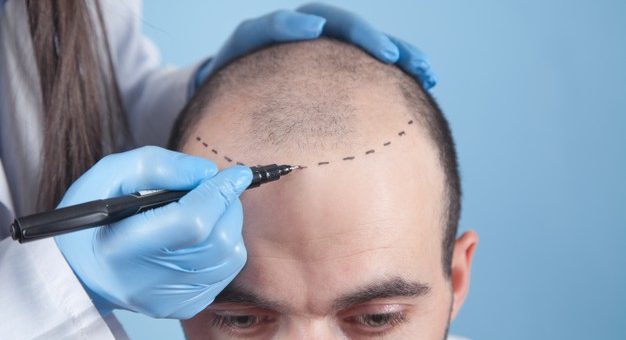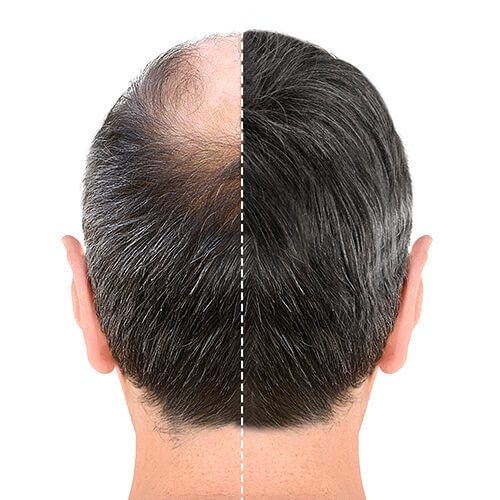Are you tired of feeling self-conscious about your hair loss? Have you tried every product on the market but still see no improvement? It’s time to consider a hair transplant. But what happens after the procedure is done? How do you ensure that your results last for years to come? In this comprehensive guide, we will take you from growth to maintenance, providing you with all the information and tips necessary to achieve optimal hair transplant results. Say goodbye to baldness and hello to confidence!
Table of Contents
What is a Hair Transplant?
A hair transplant is a surgical procedure in which individual hair follicles are removed from one area of the scalp and transplanted to another. This can be done to correct genetic balding, or to restore hair that has been lost due to injury or disease.
The most common type of hair transplant is called follicular unit transplantation (FUT). In this procedure, a strip of skin containing hair follicles is removed from the donor area, usually the back or sides of the head. The individual follicles are then extracted from the strip and transplanted to the recipient area.
Follicular unit extraction (FUE) is another type of hair transplant. In this procedure, individual follicles are removed from the donor area one at a time and transplanted to the recipient area. FUE is often considered to be less invasive than FUT because it does not involve removing a strip of skin.
Both FUT and FUE procedures can be used to achieve natural-looking results. The best candidates for It are those who have realistic expectations about what the surgery can achieve.
What are the Benefits of a Hair Transplant?
A hair transplant can have many benefits, both cosmetic and medical. For people who are unhappy with their natural hairline or suffer from baldness, a hair transplant can provide a much-needed boost of confidence. In addition, a hair transplant can also help to improve one’s overall health by stimulating blood circulation and helping to prevent further hair loss.
How Long Does a Hair Transplant Last?
A hair transplant is a surgical procedure in which hairs are removed from one area of the scalp and transplanted to another. The results of a It can last a lifetime, although it may take several months for the full results to be visible. The transplanted hair will usually fall out within two to three weeks after the surgery, but will regrow within three to six months.
Factors That Influence The Duration of Your Hair Transplant Results
Hair transplant results are not permanent. The duration of your results will depend on a number of factors, including:
-The type of hair transplant procedure you undergo: FUT or FUE?
-The skill of your hair transplant surgeon
-How well you take care of your transplanted hair following the procedure
-Your age and health
-Your genetic predisposition for hair loss
How To Maintain Your Transplanted Hair
It is important to maintain your transplanted hair in order to prevent further hair loss and ensure optimal results. Here are some tips on how to maintain your transplanted hair:
1. Keep your scalp clean and free of debris.
2. Massage your scalp regularly to stimulate blood circulation.
3. Use a mild shampoo and conditioner that won’t strip away the natural oils from your scalp.
4. Avoid over-styling or using harsh chemicals on your hair.
5. Get regular trims to prevent split ends and keep your hair looking healthy.
Assuming you have recently undergone congratulations! This is a big step in improving your overall appearance and self-confidence. Now that the surgery is complete, it is important to take care of your new hair to ensure optimal results. Here are some tips on how to maintain your transplanted hair:
1. Keep your scalp clean – It is important to keep your scalp clean and free of any build-up. Use a mild shampoo and avoid scrubbing too vigorously.
2. Avoid tight hairstyles – After surgery, it is best to avoid tight hairstyles such as buns or ponytails. These can put unnecessary stress on the newly follicles and cause them to fall out.
3. Don’t smoke – Smoking can decrease blood flow to the scalp and lead to slower healing after surgery. It can also cause the newly follicles to die off. If you must smoke, do so sparingly and be sure to brush your teeth afterwards to avoid staining your new hair.
4. Limit sun exposure – Too much sun exposure can damage the transplanted hair follicles and cause them to fall out prematurely. If you must be in the sun, wear a hat or scarf over your head for protection.
5. Be gentle with your new hair – Avoid using harsh chemicals or hot tools on your new hair for at least the first few weeks after surgery. After that, use heat styling sparingly as too much
Alternatives to Hair Transplantation
If you’re considering a hair transplant but are worried about the potential side effects or cost, there are several alternatives to hair transplantation that may be right for you.
Hair extensions and wigs are a popular option for those looking to add volume or length to their hair without surgery. Extensions can be clipped, glued, or sewn into your natural hair, and wigs can be full or partial. There are many different types and styles of hair extensions and wigs available, so you can find one that suits your needs and budget.
Minoxidil (Rogaine) is a topical medication that is applied to the scalp twice daily and is FDA-approved to treat hair loss. It is thought to work by widening blood vessels and increasing blood flow to the scalp. Finasteride (Propecia) is an oral medication that is taken once daily and is FDA-approved to treat male pattern baldness. It works by blocking the production of DHT, a hormone that shrinks hair follicles and causes them to produce thinner, weaker hairs over time.
There are also nonsurgical options for treating Hair loss such as low level laser therapy (LLLT) which uses light energy to stimulate hair growth, and Platelet Rich Plasma (PRP) therapy which uses your own blood plasma to promote healing and hair growth. These treatments are often done in combination with minoxidil or finasteride for best
Conclusion
This surgery is a safe, effective way to restore your natural hair growth. It can help you achieve the look you’ve been dreaming of, with minimal downtime and long-lasting results. With proper maintenance, the effects of a It can be enjoyed for many years to come. The most important thing is to find an experienced provider who understands your individual needs and how best to meet them so that you get the best outcome possible from your hair transplant procedure.
You May Also Like:Understanding the Technical Variations Between Canal FUE and DHI Hair Transplants



